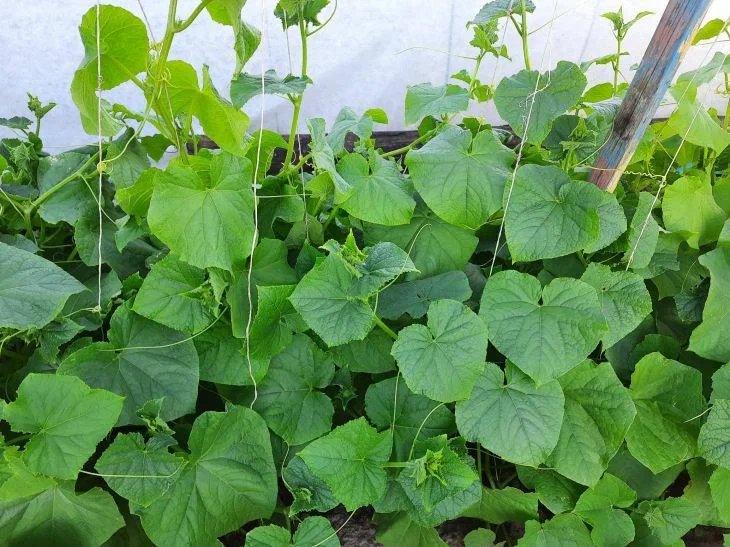Cucumbers, like insatiable gluttons, require a special menu during the flowering and fruiting period.
Correctly selected “dishes” will not only save you from a meager harvest, but will also make it a record one.
After planting the seedlings or when 4-5 leaves appear, the plants need a starting set of nutrients. At this stage, nitrogen-phosphorus mixtures are added, stimulating the growth of greenery and strengthening the roots.

As soon as the first buds form, cucumbers need enhanced nutrition. Spraying with boric acid (0.5 g per 1 l of water) will prevent the flowers from falling off and increase resistance to stress.
Natural fertilizers are irreplaceable in the active flowering phase. A solution of mullein (1:10) or fermented chicken manure (1:20) applied under the root will provide the plants with nitrogen and microelements. Consumption is 0.5 l per bush.
To form strong ovaries, add wood ash (150 g per 10 l of water). Potassium in its composition accelerates ripening, and calcium protects against rot. The solution is poured onto the soil or sprayed onto the leaves.
Ten days after the first feeding, greenhouse cucumbers are watered with a nitrophoska solution (15 g per bucket of water). The next step is an infusion of mullein with potassium sulfate (20 g per 10 l), which enhances metabolism.
Before fruiting, plants are sprayed with a urea solution (10 g per 10 l) or fermented herbal infusion. Potassium nitrate (25 g per 10 l), applied under the root, will speed up the filling of the fruits.
Yellowing of leaves is a sign of nitrogen deficiency. Nettle infusion or ammonium nitrate will help.
Small fruits and weak shoots indicate a lack of potassium - add ash or potassium monophosphate.
A competent combination of organic and mineral fertilizers is a formula that turns ordinary beds into a conveyor belt for the production of crispy cucumbers.
By following these rules, even a beginner will reap a harvest that will be the envy of his neighbors.
